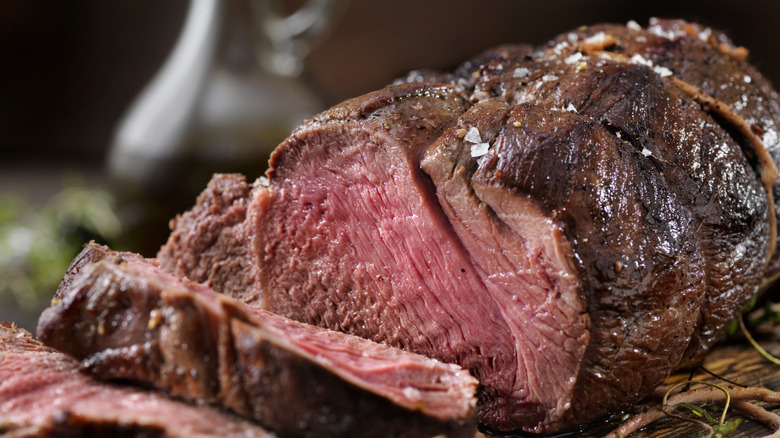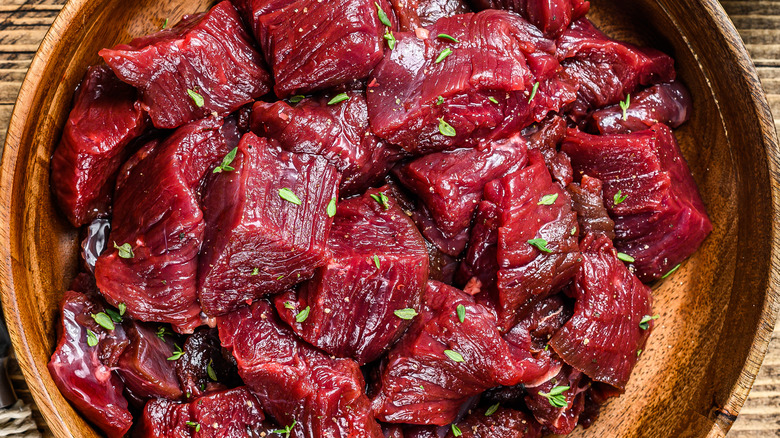Here's Why You Should Never Substitute Beef For A Cut Of Venison
Venison is unlike any other type of red meat. Derived from deer, it is a type of game meat that has special characteristics, making it difficult to simply swap it out or substitute it with another kind, especially beef.
Venison is not an industrialized product. While the majority of beef sold around the world has been fed on a diet of corn, grains, grass, and hay, venison is an almost universally wild product. Even deer that are raised on pastured farmland do not share the corn and grain diet of the standard beef cattle. Venison primarily eat foraged grass, herbs, acorns, and other assorted plants. This diet, along with the fact that deer are naturally more active than beef cattle, make venison meat a completely different and unique product.
But what exactly does the diet do for the meat? What an animal consumes has a direct relationship with and impacts the flavor and texture.
There is a vast difference in flavor and texture
A wild or farmed deer has a vastly different lifestyle from that of cattle. They are constantly on the move, and therefore do not develop the high amounts of marbling fat so indicative of quality beef. If you have a venison steak and a beef steak side by side, you will immediately be able to tell the difference between the two.
The venison will be a solid purple-red color, with no marbling fat to be seen, while the beef steak will likely have rivers of opaque fat running through it that provides distinct flavor. But just because venison is relatively devoid of fat does not mean that it is flavorless. On the contrary, venison has an earthy taste, peppered with traces of the acorns and herbs from its diet. And since there is such an absence of fat, venison meat is fine grained and will cook much faster than beef.
Like other lean meat, venison benefits from additional moisture in the form of marinades and is really at its best when cooked to an internal temperature of 145 degrees Fahrenheit or medium rare. So while they may look similar and come in similar cuts, stick to the status quo and keep beef and venison in their respective culinary lanes.

